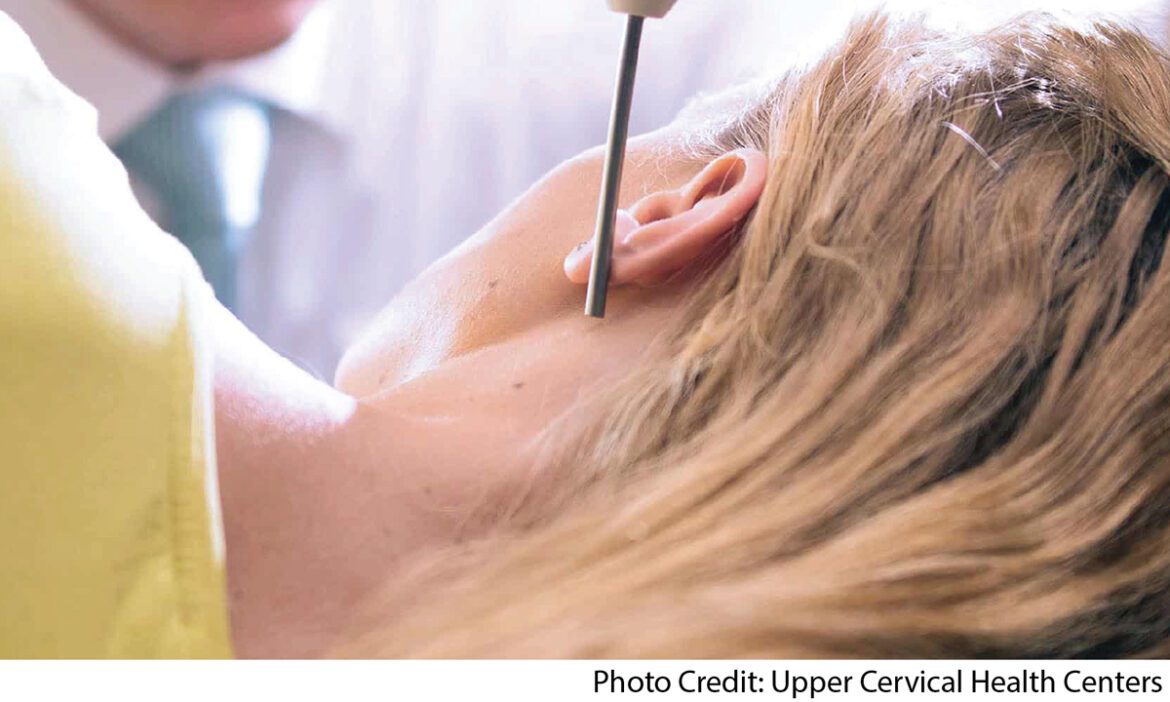There are more than 70,000 chiropractors in the United States—a modest number compared to other medical disciplines, such as the 250,000 primary care physicians or the approximately 120,000 internal medicine doctors, according to the American Medical Association.
A Doctor of Chiropractic (DC) has broad diagnostic skills—not only to perform skeletal adjustments, but also to advise on therapeutic and rehabilitative exercises, lifestyle, and dietary counseling. DCs also focus on musculoskeletal disorders and misalignments of the spine to support the nervous system for better nerve function.
But what about Upper Cervical Chiropractic specialists? A specialty most have never heard of—but why? There are only 1,000 chiropractors in the United States trained as upper cervical care specialists. Comparatively, only about 200 of those practitioners utilize percussive soundwave correction techniques. This specialized training, combined with state-of-the-art technology, delivers precise, non-invasive adjustments to correct spinal misalignments of the upper cervical region.
Think about it. Neck pain is one of the most common musculoskeletal disorders (especially with so many Americans working on computers every day), so the need for upper cervical care is in demand. Yet this clinical discipline remains a hidden gem—supporting both complementary and evidence-based medicine.
So, what is upper cervical care, and what do upper cervical chiropractic specialists do?
“Upper cervical care is about restoring nerve function by gently unlocking the upper spine and preventing pressure on the brainstem and spinal cord,” said Dr. Renee Hahn of Upper Cervical Health Centers in Melbourne, Florida.
Echoing that statement, the International Chiropractic Association (ICA) notes: “Upper cervical chiropractors focus on the top two vertebrae of the spine (Atlas and Axis) to address misalignments and their impact on the nervous system.”
To summarize: if the first two bones in the neck are misaligned, communication between the brain and body is interrupted. These specialists locate and correct the misalignment to restore proper nerve transmission between the brain and body.
“The Atlas and Axis are vulnerable to misalignment because they are the most mobile segments of the spine. Misalignments can be caused by anything physical—including falls, auto accidents, sports, concussions, emotional stress, and even childbirth trauma. Further, by utilizing percussive soundwave correction techniques, our patients experience longer-lasting corrections,” added Dr. Hahn.
Misalignments can manifest as:
-
Chronic Headaches or Migraines: Adjustments can alleviate pressure on the brainstem and improve blood flow to decrease head pain.
-
Neck Pain: Consistent neck pain, limited range of motion, or stiffness may indicate an issue with the Atlas and Axis.
-
Vertigo or Balance Issues: Misalignments can disrupt the signals between the inner ear and brain, causing dizziness or vertigo.
-
Back Pain or Postural Imbalances: Misalignments can lead to changes in the spine, contributing to pain and poor posture.
-
Sleep Problems: Misalignments can interfere with sleep quality, causing insomnia or restless sleep.
-
Stress and Anxiety: Misalignments can lead to heightened anxiety or tension.
-
Jaw Pain or TMJ Disorders: Misalignments can contribute to tension in the jaw.
-
Hearing Problems: Misalignments can affect hearing loss, inner ear conditions, and tinnitus.
Dr. Hahn began studying upper cervical care because of her own evolving health journey. She grew up under general chiropractic care due to a serious car accident as a young child, coupled with her parents’ strong alternative and holistic health beliefs.
“I honestly saw miracles from chiropractic care in my younger years after my accident,” added Dr. Hahn.
In her mid-thirties, with a successful advertising career underway, she decided to attend chiropractic school. Unfortunately, she experienced another car accident—and this time, traditional chiropractic treatments were no longer effective.
“I began to lose feeling in my arms and hands, experienced loss of grip strength, headaches, neck pain, shoulder pain, hip pain, low back pain, and brain fog. While in school, I continued to learn about upper cervical care and soundwave adjustments. My research indicated how misalignments in the upper cervical region could negatively affect the alignment of the entire body. Once I began upper cervical care, my health quickly turned around. I became convinced the upper cervical region is the ‘key’ to the anatomy of how the body and brain communicate to heal itself,” she said.
With that experience, Dr. Hahn transitioned from general chiropractic studies to become an upper cervical specialist. Today, she has practiced this specialty for seventeen years and founded Upper Cervical Health Centers in 2012.
Personally, I too have undergone upper cervical adjustments due to a shoulder injury. The corrections created a healthier curvature of my spine (confirmed by X-rays) in my neck region, which released tension in my shoulder. After two decades, I finally found effective treatment for an old injury—and, coincidentally, one of the most valuable discoveries in my ongoing health journey.
For more information on this clinical specialty or to find a doctor, visit https://www.uppercervicalcare.com/.

by Lisa F. Crites, Health & Medical Journalist, Patented Inventor, News Columnist

